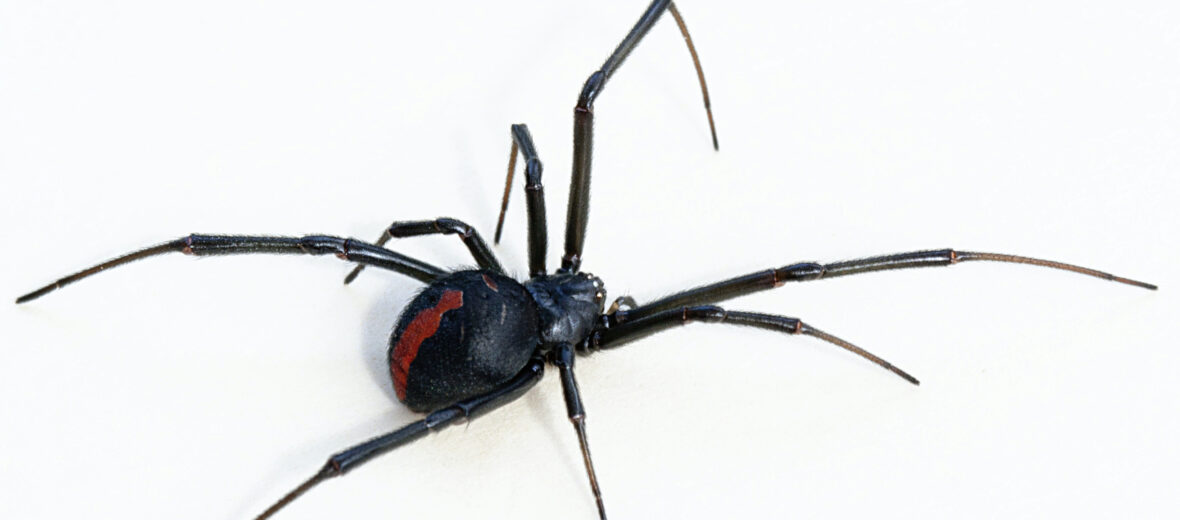
The redback spider, aka the Australian black widow, is a species of highly venomous spider originating in the South Australian & adjacent Western Australian deserts, but is now found throughout Australia, Southeast Asia and New Zealand; with colonies elsewhere outside Australia. They are especially common in urban areas within human habitations. Bites are common!
First the Stats…
Scientific name: Latrodectus hasselti
Length: Body – up to .4 inch | Legspan – up to 1.2 inches
Lifespan: Up to 6 months (males) | up to 3 years (females)
Now on to the Facts!
1.) Males do not spin webs. Females do and they are a cone-shaped, sticky mess. They aren’t concerned with appearances after all.
2.) These spiders are sexually dimorphic, as females are much larger than males and black in color. Males are small and pale brown in color.
3.) Small insects are typically the prey of redbacks, but they’re able to capture large creatures like male trapdoor spiders, crickets, lizards, and even snakes if they become entangled in the web. Prey “acquisition” is also frequently observed, with large females taking food from other spider’s webs.
4.) During the mating process, the male will offer his abdomen to the female by somersaulting and displaying his abdomen to her. She will begin to drip digestive juices onto his abdomen while he inserts his first palp. If he is strong enough, he will insert the second palp and then try to make his escape. Most males fail to escape and end up as food for the female.
5.) Once the female has mated, she can store sperm and use it over a period of up to 2 years to lay several batches of eggs; up to 10. Each sac contains up to 250 eggs!
But wait, there’s more on the redback spider!
6.) The baby spiders are cannibalistic and will eat other spiderlings in the newly hatched bunch. They will also eat the remaining eggs.
7.) Redback bites happen often; particularly in summer. Over 250 bites need antivenom each year. Only the female’s bite is dangerous. They can cause serious illness and have caused deaths. Redback Spiders rarely leave their webs, so people are not likely to get bitten unless a hand or foot is put right in the web.
Did you know…?
Most of the reported spider bites in Australia are linked to redbacks, which are responsible for around 2,000 hospitalized bites each year!
8.) Due to their small jaws most bites are not able to deliver venom. The venom affects the nervous system, resulting in the release and depletion of neurotransmitters, causing paralysis.
9.) Bite symptoms are sever pain, sweating (including sweating at the bite site), muscular weakness, nausea, and vomiting. Since the introduction of antivenom, there have been no reported deaths.
10.) Even though they look and act very similar, the redback spider is not related to the black widow; it is a separate species.
Now a Short Redback Spider Video!
Also, check out the Critter Science YouTube channel. Videos added frequently!
Want to suggest a critter for me to write about? Let me know here.



